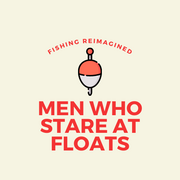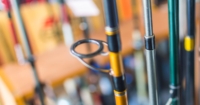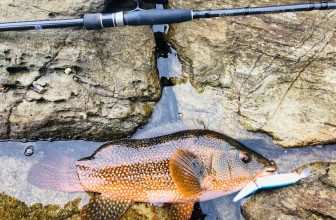A Beginner Guide to UK Sea Fishing with Lures
Sea fishing with lures is a tried and tested way to catch saltwater fish. And one of the most enjoyable. You’re essentially hunting the fish. Using Google Maps and depth charts (like those on Navionics) to find potential fishing marks. In UK waters bass tend to hunt shallow, rocky ground whereas pollock hide deep in the kelpy depths. It’s both an art and a science.
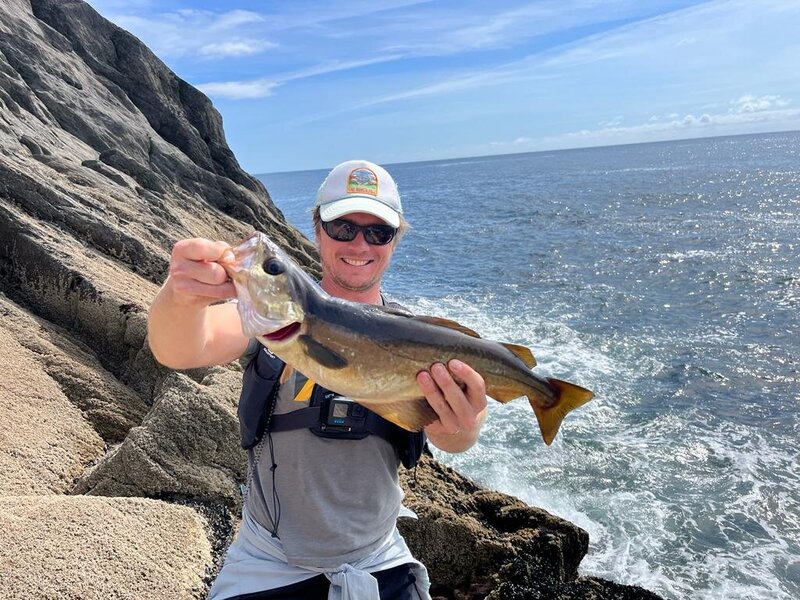
You can find out more about this trip in our post on fishing in the Beara Peninsula and more about pollock fishing with our introductory guide.
With a basic grasp of watercraft – an understanding of the environment that you’re fishing in and of the fish itself – saltwater lure fishing can be incredibly effective. What does it eat? How does the tide and time of year affect the fish? What colour lure or lure retrieval style is most effective?
But you’ve got to put the effort in and have the appropriate sea fishing gear to hand.
Can you use lures for sea fishing?
Yes, you can use lures for sea fishing. In fact, lures are arguably the best way to fish from the shore and cover ground. You can fish with lures, making your way up and down the coastline looking for bass, pollock, wrasse or whatever your saltwater fish of choice is.
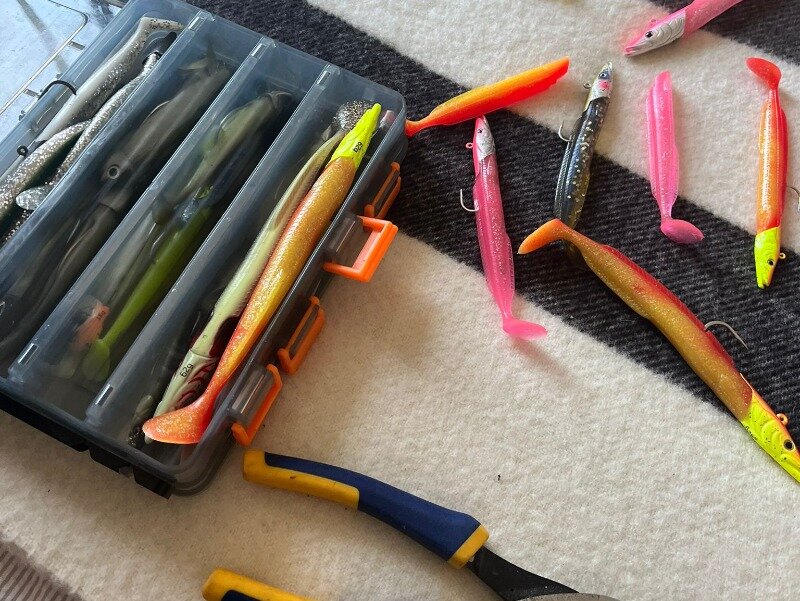
Or – should you be so lucky – you can troll with lures from a boat. Covering even more ground and reaching otherwise uncastable spots. Whilst saltwater lure fishing and freshwater lure fishing share some similarities – covering ground, trialling different methods and marks – saltwater lure fishing is much more affected by both weather conditions and the tide.
How do I start saltwater lure fishing?
To start saltwater lure fishing you will need:
- A saltwater-appropriate lure fishing rod
- A sea-specific spinning reel
- Braided line
- Leader material
- Sea fishing lures
- Pliers and scissors
- Lure clips
- Fishing mark(s)
- A lure box
Typically a nine-foot, fast action rod with a casting weight of up to 60g would cover every eventuality when lure fishing from the shore in the UK. More supple rods better suited to bass fishing typically have a casting weight of around 35g, but would struggle with larger pollock.
Reel-wise, an entry-level 2500-size sea spinning reel is equally adept at handling almost any UK fish. But the larger the reel, the more line it can hold and the more effective it is at landing bigger fish. Particularly if you’re targeting large pollock that dive into the briny depths.
If you’re fishing for bass or wrasse, then 20lb braid should suffice. If you’re after larger pollock 30lb is a must. And either mono or fluorocarbon leader is effective. Just marry the leader’s strength with the braid. You’ll also need a good fishing spot. To do that we recommend our guide on how to find good fishing spots.
Fluorocarbon leader is growing in popularity as it is less visible than mono in the ea. However, it is (generally) a slightly softer, less resistant material than mono.
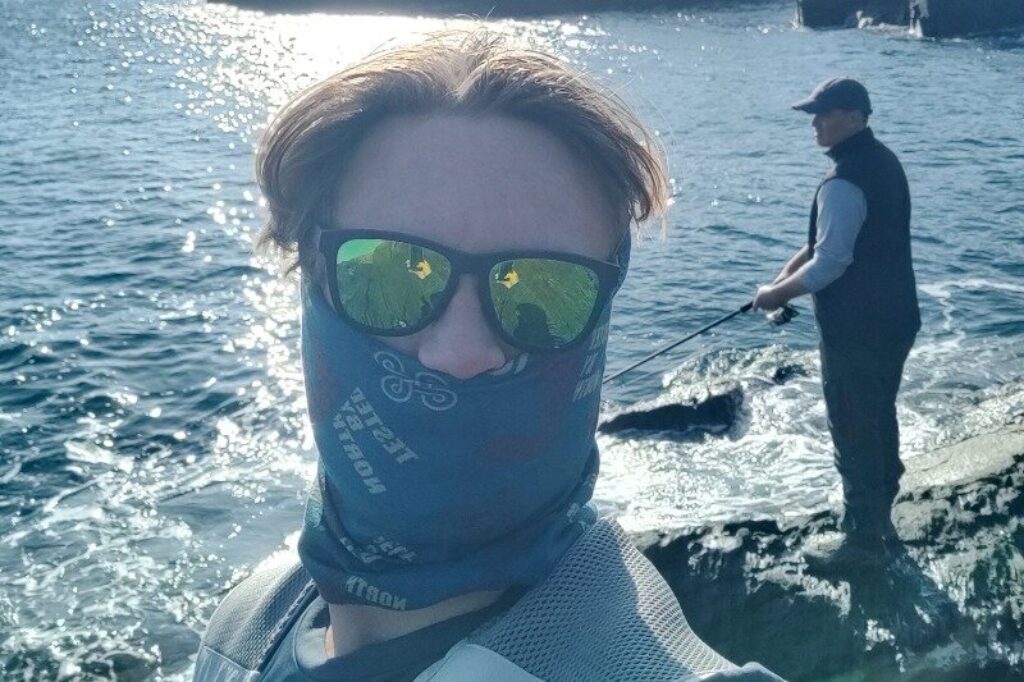
Of course, you need lures if you’re lure fishing in the sea. Be prepared to lose them and carry spares. You don’t need to spend a fortune on expensive lures and – in many cases – we’ve found cheap lures to be just as effective. Particularly when fishing deep water. And lure clips make changing your artificial bait quick and easy.
Pliers are of course essential for removing lures from the mouths of fish. And really you need to go with someone who is adept at handling fish to start with. Conscious fishing is really important. Leave as little impact as possible. Scissors to cut lines and help you tie rigs are key too.
Finally, you need a place to fish. Or fishing marks. Plural. One is unlikely to be enough and make sure you cover ground.
The 10 Best Lure Fishing Rods in 2023 Editor’s choice
How do you fish with a lure in saltwater?
Typically a cast-and-retrieve style of lure fishing is enough to catch most predatory fish. But there are nuances you should be aware of like:
- How deep are the fish you’re targeting?
- Do you need to use a sinking lure or a surface popper?
- How fast should your retrieval speed be?
For example, if you’re targeting wrasse, jigging can be a very effective method of lure fishing as they tend to live in deep sections of water near the shore. So jigging the lure up and down at your feet can be more effective than casting and retrieving.
Whereas when you’re lure fishing for bass you’re targeting fish that primarily hunt at or near the surface. This means topwater lure fishing or surface popper fishing should be your preferred method of targeting the fish.
What fish can I catch in the UK seas with lures?
The most popular fish to catch with lures in UK waters are:
- Bass
- Pollock
- Wrasse
- Mackerel
- Coalfish
- Cod
The above are a lure fisherman’s preferred choice because these are sport fish. Hard fighting, exciting and can be a real challenge on any setup. Bass and – thanks to their incredible diving power – pollock are personal favourites. Have a look at our top tips for catching bass here.
However, you aren’t limited to these saltwater fish. You can also catch john dory, mullet, flatfish and flounders, plaice, eels, rays, dogfish and bream with lures. They just aren’t as prolific or sought after by most lure anglers.
What type of lure is best for sea fishing?
From personal experience – and personal preference – using metal lures like Surf Seekers allow you to cover more ground, fish at different depths and use the sun to your advantage. They’re prolific across multiple species of fish. Bass, pollock. mackerel… All the UK’s feistiest fish can be caught on these little gems.
The metallic glean of the lure twinkles in the sun and – thanks to its aerodynamic, weighty design – can travel a serious distance. Fantastic for reaching deeper water and areas further from the shore. And, possibly best of all, they’re great value.
That isn’t to say soft plastics and other jig heads or worms aren’t effective lures. Far from it. As a general rule, when the time and tide is right, fish aren’t picky. They’re hungry, aggressive or both.
What’s the best saltwater fishing lure setup?
For us the best saltwater lure fishing setup has to be able to reach the fish, hold up to snags and larger fish and be largely invisible in the water. That means strong, thin line, a translucent leader and strong knots between lines and hook lengths/splitters.
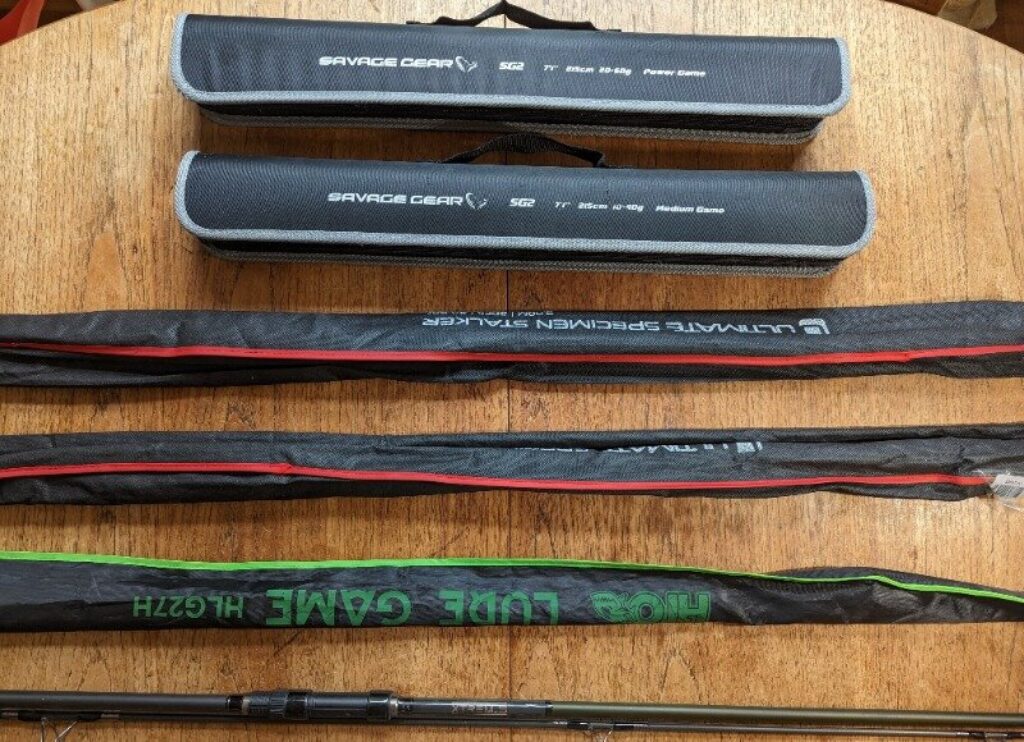
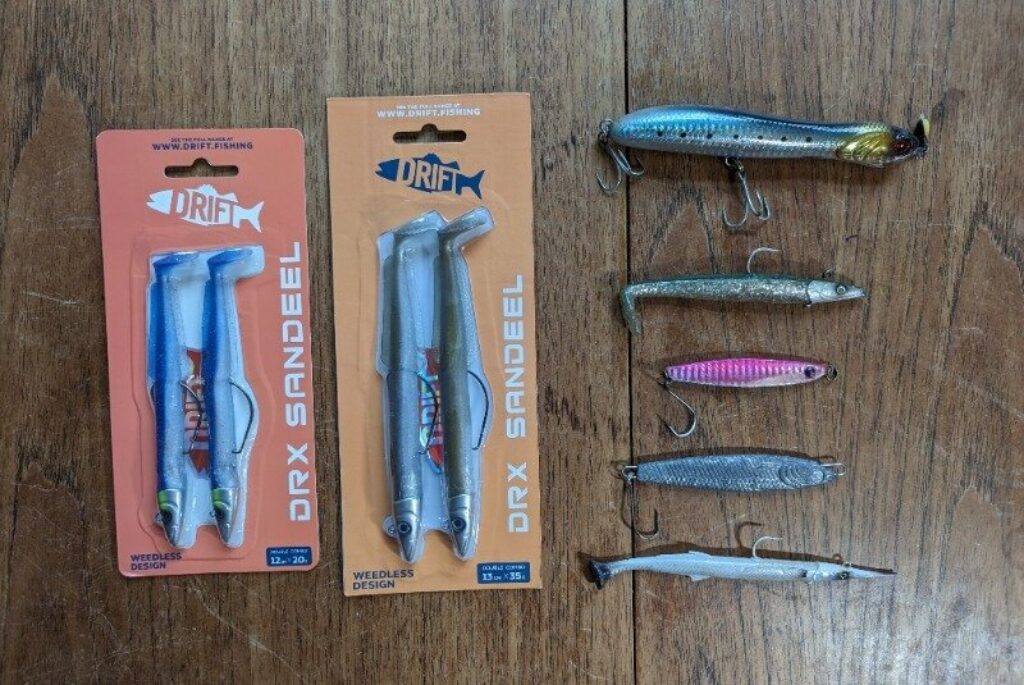
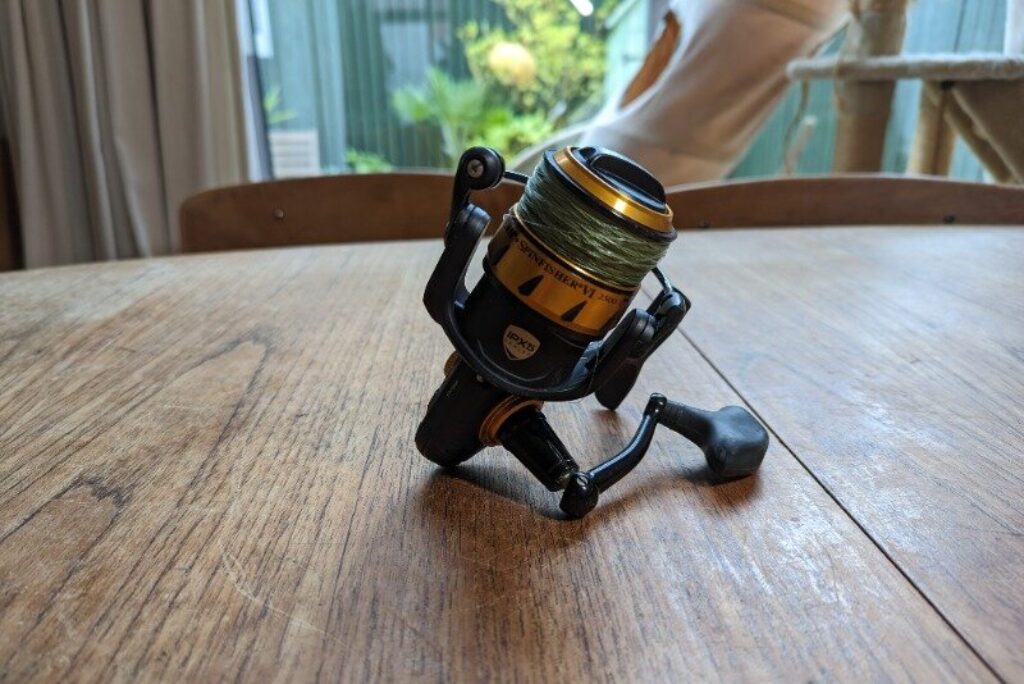
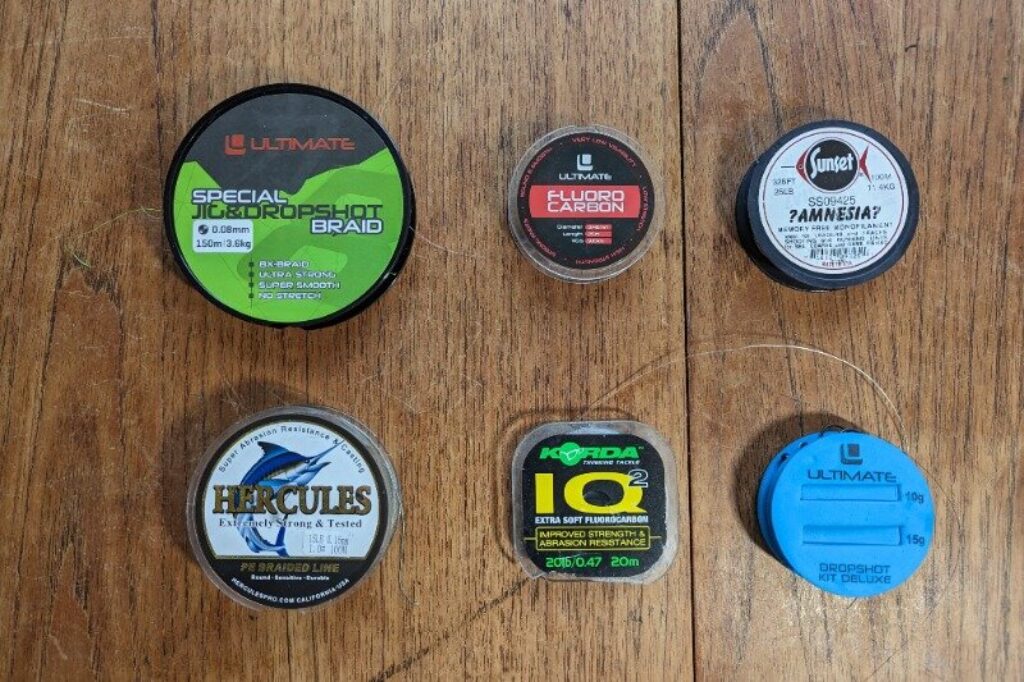
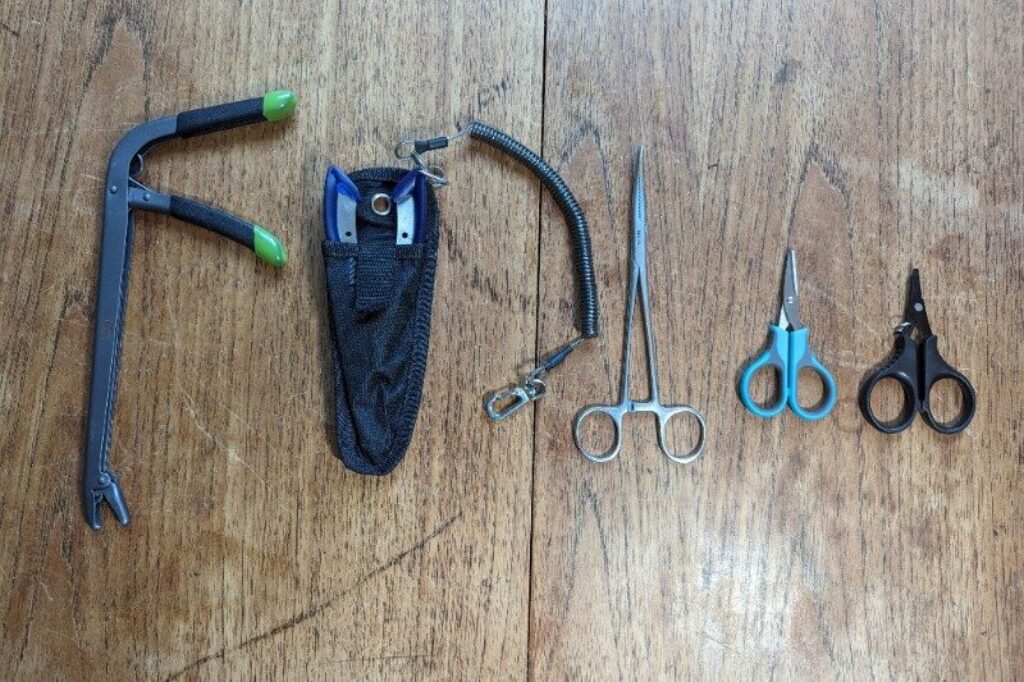
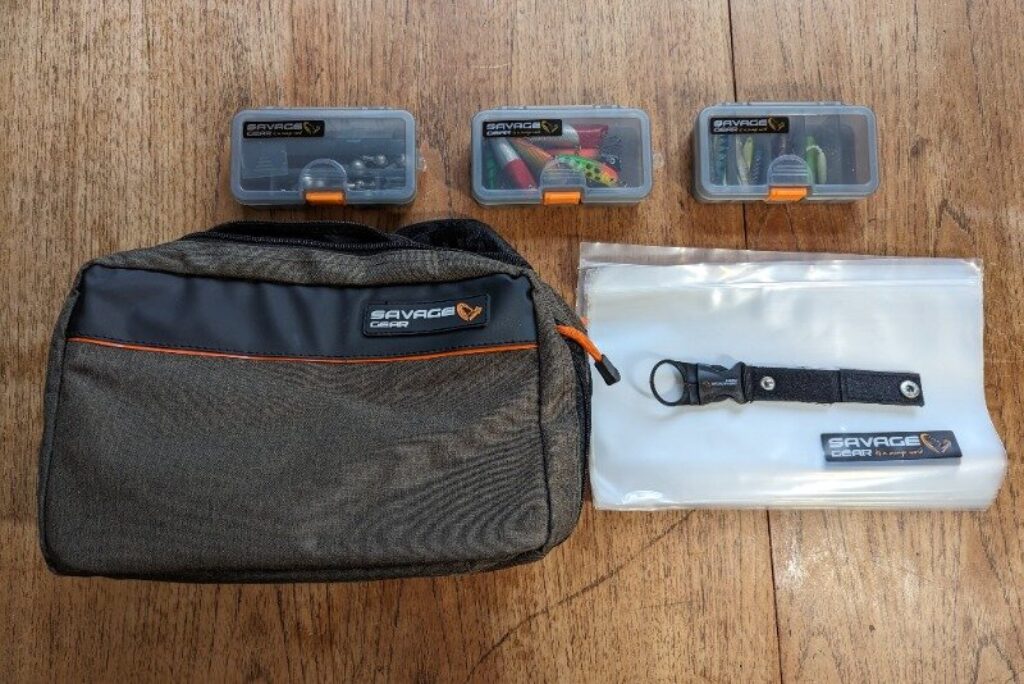
So you need:
- Strong braid – 20lb+ should suffice
- A translucent, strong leader – we recommend fluorocarbon, but monofilament can work too
- To learn how to tie an FG knot – between braid and leader – and a uni-knot
- A rod and reel
- Lures
- Pliers and scissors
How to tie a uni-knot
How to tie an FG Knot
FAQs
What colour lure should I use in saltwater?
Through personal experience, we have found that natural colours tend to work best for the majority of fish. Darker greens, silvers, blues and whites tend to best mimic baitfish like mackerel or spratt.
The colour of the lure you choose does depend on the fish you’re targeting. Certain new schools of thought suggest that using brightly coloured lures for pollock – who hunt by sight in the depths – is ultra-effective. Which is not the experience we have had.
When is the best time to fish with lures in saltwater?
Most of the time fishing at dawn, dusk or at night works best when lure fishing. Peak sunlight at the middle of the day is generally best avoided as predatory fish tend to hunt in the shadows.
And you need to marry this up with the tide times. Most sea fish – in the UK at least – are more active around the ebbing and flooding tide. One hour on either side of the ebb and the flood tends to be when fish are most active. If you can fish those times at dusk or dawn you’re in good shape.
What is the best season to fish in the sea with lures in the UK?
Generally, the summer months in the UK are best for lure fishing. The warmer water and spawning seasons mean the fish are either active in preparation for spawning or in a post-spawning frenzy.
Pollock spawn between November and February and spend the prior late summer and autumn months fattening up. The bass spawning season is between March and June and the later summer months are spent regaining the size they lost spawning.
Tags: LuresSea Fishing
Harry
Hi, I'm Harry. A keen, albeit exceedingly average fisherman. I've spent the last few years trawling London's waterways with - if I'm being kind - varied success and would love to help you avoid the mistakes I have made.
